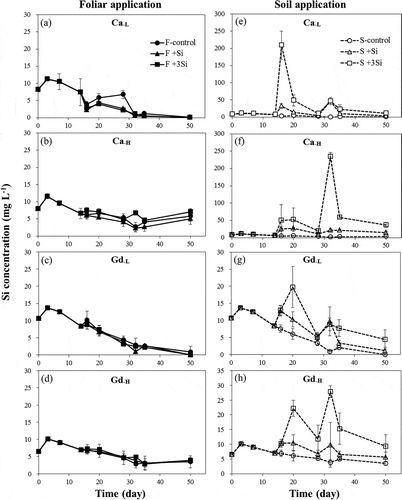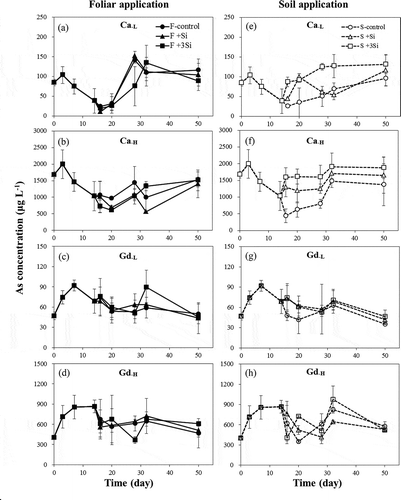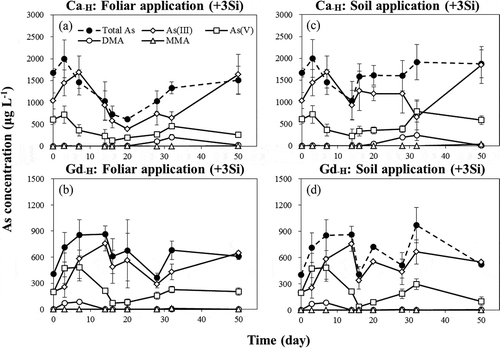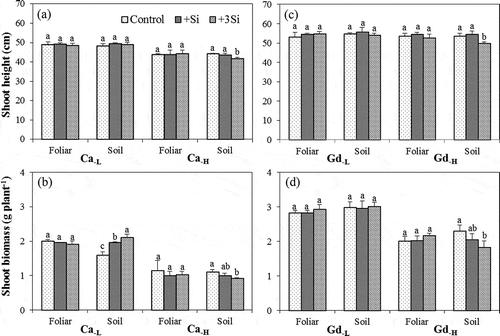Figures & data
Table 1. The basic properties of the studied soils.
Figure 1. The (a–d) pH and (e–h) redox potential of Chiwulan (Ca) and Guandu (Gd) soil with different silicon (Si) treatments during the flooding conditions (F: foliar application; S: soil application; the addition of 0-, 1- and 3-fold recommendation rates of Si in soil application and 0, 0.1 and 0.3% Si in foliar application are expressed as control, +Si and +3Si, respectively; Si was added on the 15th and 30th days).

Figure 2. The changes of silicon (Si) concentrations in soil pore water with (a–d) foliar application and (e–h) soil application of Si during the flooding conditions (F: foliar application; S: soil application; the addition of 0-, 1- and 3-fold recommendation rates of Si in soil application and 0, 0.1 and 0.3% Si in foliar application are expressed as control, +Si and +3Si, respectively; Si was added on the 15th and 30th days).

Figure 3. The changes of arsenic (As) concentrations in soil pore water with (a–d) foliar application and (e–h) soil application of silicon (Si) during flooding conditions (F: foliar application; S: soil application; the addition of 0-, 1- and 3-fold recommendation rates of Si in soil application and 0, 0.1 and 0.3% Si in foliar application are expressed as control, +Si and +3Si, respectively; Si was added on the 15th and 30th days).

Figure 4. The changes of arsenic (As) species concentrations in Chiwulan-high (Ca-H) and Guandu-high (Gd-H) soil pore water with (a–b) foliar application and (c–d) soil application of 3-fold recommendation rates of Si during the flooding conditions (Si was added on the 15th and 30th days).

Figure 5. The (a, c) shoot height and (b, d) shoot biomass of rice (Oryza sativa L.) seedlings grown in Chiwulan (Ca) and Guandu (Gd) soils with different silicon (Si) treatments. (F: foliar application; S: soil application; the addition of 0-, 1- and 3-fold recommendation rates of Si in soil application and 0, 0.1 and 0.3% Si in foliar application are expressed as control, +Si and +3Si, respectively).

Table 2. The concentrations of silicon (Si) in shoot and the concentrations of arsenic (As) in roots (removing iron plaque) and shoots of rice seedlings grown in Chiwulan (Ca) and Guandu (Gd) soils with different As contents and Si treatments.
Table 3. The average silicon (Si)/arsenic (As) molar ratio in soil pore water, shoot biomass and total uptake of As in shoots of rice seedlings grown in Chiwulan (Ca) and Guandu (Gd) soils with different As contents and Si treatments.
